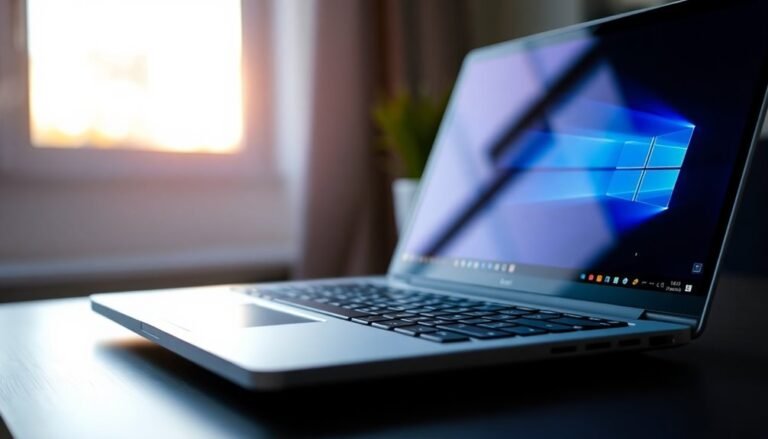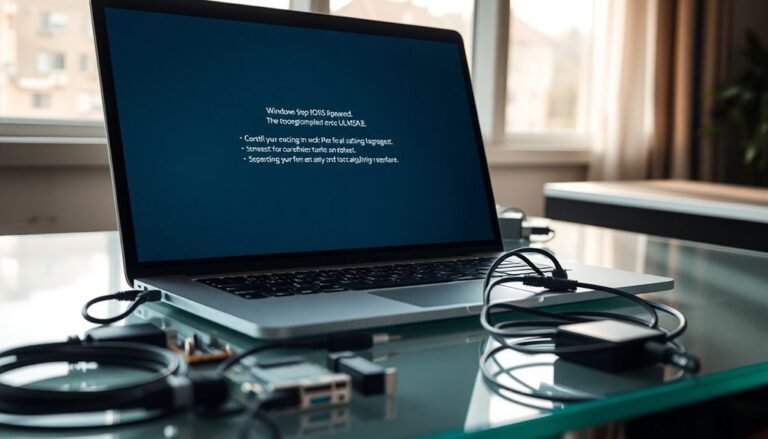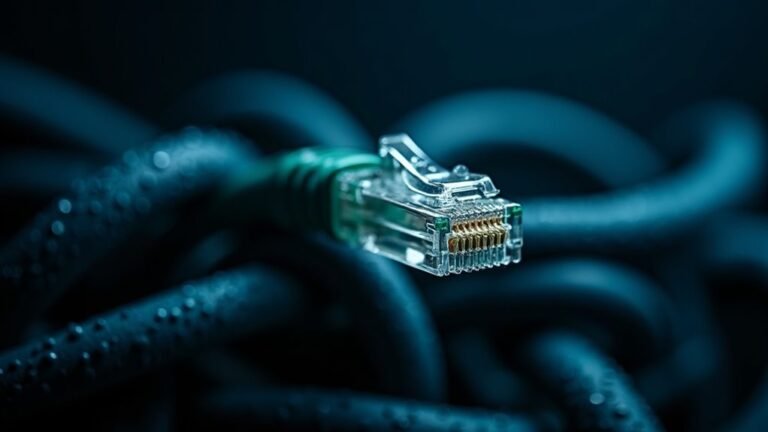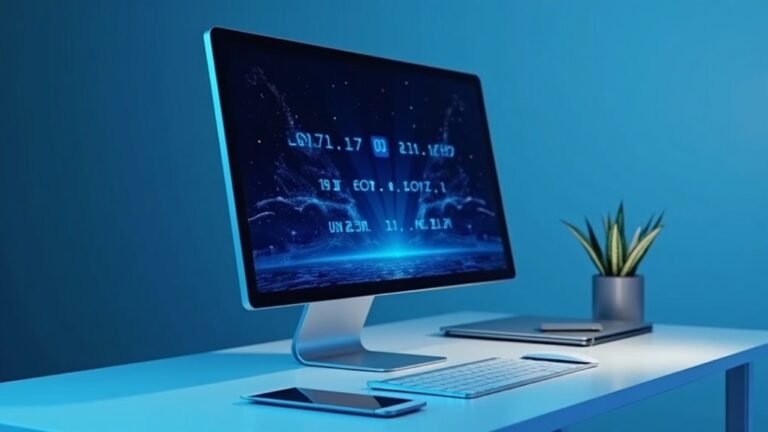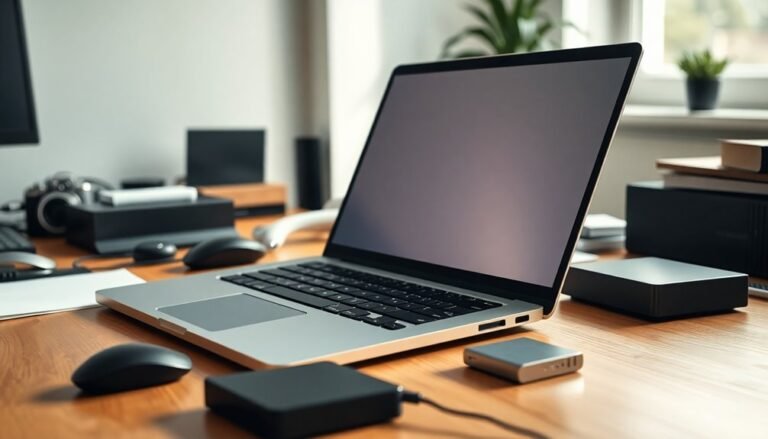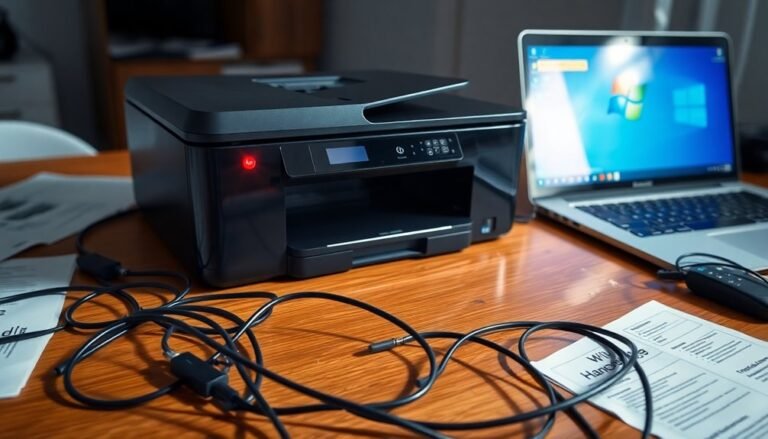HP Laptop Slow Startup Windows 11: Fix HP Boot Time Problems
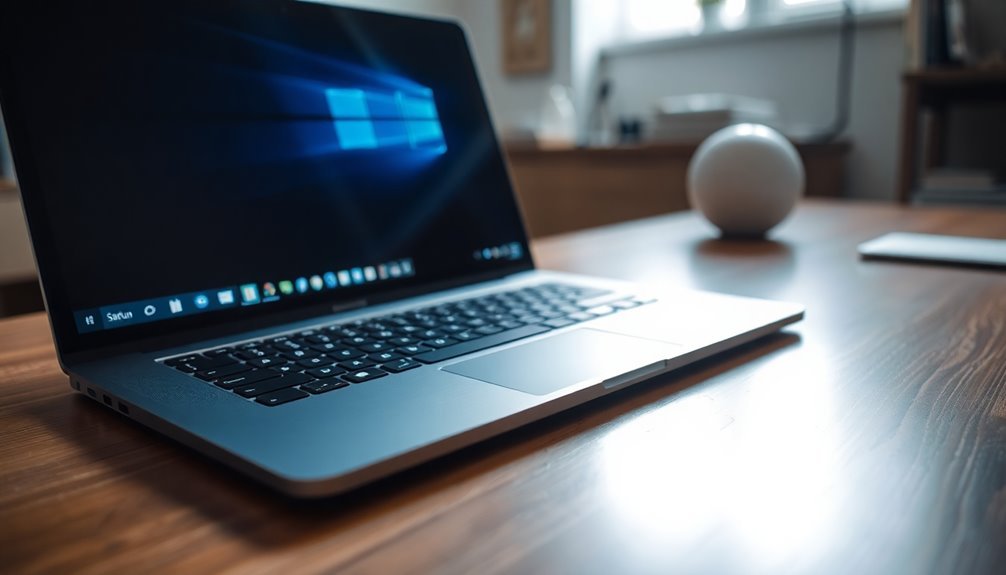
If your HP laptop has a slow startup on Windows 11, begin by disabling unnecessary startup apps in Task Manager. Next, update all drivers using HP Support Assistant.
Consider upgrading to an SSD if your laptop currently uses an HDD. Adding more RAM can also improve performance if possible.
Run malware scans to ensure your system is clean. Additionally, check for and install any available Windows updates.
Optimize your BIOS settings by setting your SSD as the primary boot drive. Enable Fast Startup to help reduce boot times.
For even more robust solutions, the following steps dive deeper into resolving startup issues.
Common Reasons for Slow Startup on HP Laptops With Windows 11
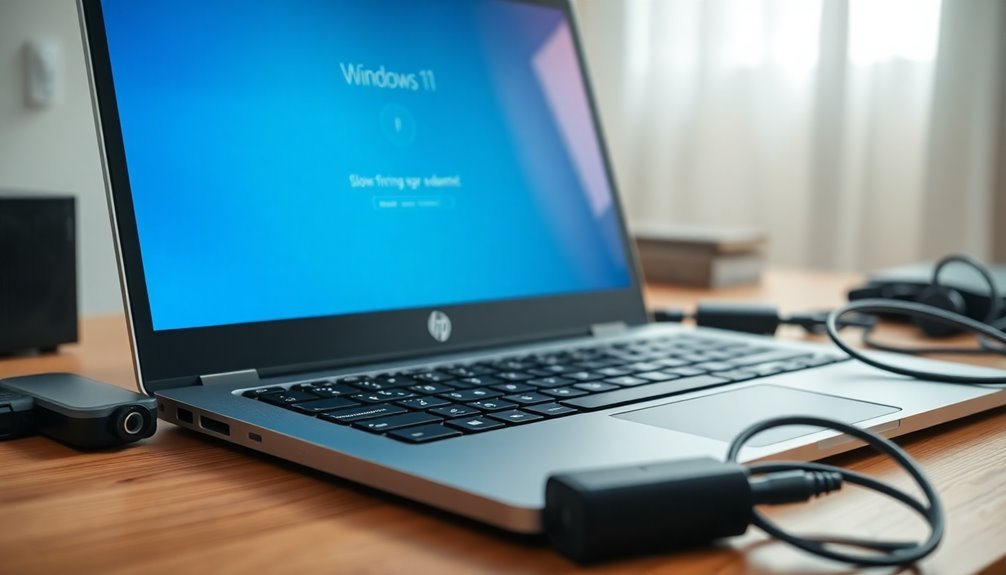
If your HP laptop with Windows 11 is experiencing slow startup times, several key factors could be causing the issue. One common reason is outdated or incompatible drivers, particularly for graphics, audio, and chipset components.
Windows Update may not always provide the latest drivers, so it’s important to visit the official HP support website to download and install the most recent and compatible drivers for your device. Installing incorrect drivers can negatively impact system performance and slow down boot times.
Another major factor affecting startup speed is the condition of your hard drive. Traditional mechanical HDDs are significantly slower than SSDs, and a nearly full or fragmented hard drive can increase boot time. Excessive startup programs can also be a major cause of slow boot times in Windows 11, as too many applications launching at startup will delay the system from becoming fully operational.
Additionally, disk errors and bad sectors can disrupt the startup process. Utilize built-in Windows tools like CHKDSK to scan and repair disk issues to improve performance.
Startup programs and background services also play a large role in startup speed. Too many programs launching at boot consume valuable system resources.
Use Task Manager to identify and disable unnecessary startup applications and services to enhance boot time. Insufficient RAM or overall system resources can further slow down startup, especially when running resource-intensive applications.
Lastly, malware infections or corrupted software can cause significant delays during startup. Running a comprehensive malware scan with trusted security software can help identify and remove harmful programs, ensuring your HP laptop boots quickly and smoothly.
Disabling Fast Startup to Resolve Boot Delays
How to Disable Fast Startup on Windows 11 to Fix Boot Delays and Improve Laptop Performance
Fast Startup in Windows 11 is designed to speed up boot times by saving system state to a hibernation file. However, on HP laptops and other devices, Fast Startup can sometimes cause slow boot delays, startup issues, or crashes—especially if system files are corrupted or updates are pending. Disabling Fast Startup forces a full shutdown and clean boot, which often resolves slow startup problems, recurring crashes, and update errors.
If your HP laptop has an SSD, disabling Fast Startup will have minimal impact on boot speed but will improve overall system reliability and reduce update-related problems. Additionally, turning off Fast Startup makes accessing BIOS easier and can help fix freeze-ups or issues with dual-boot setups. Because disabling Fast Startup is a safe action, it is a common troubleshooting step recommended by experts to improve system stability.
To disable Fast Startup on Windows 11, follow these simple steps:
- Open Control Panel and navigate to Power Options.
- Click “Choose what the power buttons do” from the sidebar.
- Select “Change settings that are currently unavailable.”
- Uncheck the box labeled “Turn on fast startup (recommended).”
- Save your changes and restart your laptop.
By disabling Fast Startup, you ensure Windows fully resets hardware and software states during shutdown, leading to smoother startups and fewer boot errors.
This easy tweak is an effective fix for many Windows 11 boot performance issues on HP laptops and other brands. For more Windows 11 optimization tips, check out our detailed guides and troubleshooting resources.
Managing and Reducing Startup Programs
How to Manage and Reduce Startup Programs to Speed Up Your HP Laptop Boot Time
If you’ve already disabled Fast Startup on your HP laptop but still experience slow boot times, managing and reducing startup programs can significantly improve performance.
Follow these simple steps to optimize your Windows 11 startup and enjoy faster, smoother booting.
1. Disable Unnecessary Startup Apps via Windows 11 Settings
Open Windows 11 Settings by navigating to Apps > Startup. Here, you’ll find a list of applications that launch automatically when your PC boots. Toggle off apps that you don’t need to start automatically. The Settings app also displays each program’s startup impact, allowing you to identify and disable resource-heavy apps that slow down your system.
2. Use Task Manager for Advanced Startup Program Control
Press Ctrl + Shift + Esc to open Task Manager, then click the Startup tab. Review enabled programs carefully, focusing on those labeled High impact. Right-click any non-essential programs and select Disable to prevent them from running at startup. This method gives you deeper control over what runs during boot and can significantly reduce startup delays.
3. Manage the Startup Folder Manually
For manual tweaks, open the Startup folder by pressing Win + R, typing `shell:startup`, and pressing Enter. This folder contains shortcuts to programs that launch at startup. Remove any unwanted shortcuts to speed up your boot process further.
4. Regularly Review and Monitor Startup Programs
New software often adds itself to startup without your notice, which can gradually slow down boot times. Make it a habit to regularly check and manage startup programs using the above methods to maintain optimal laptop performance.
By following these tips, you can effectively reduce startup programs, leading to faster boot times and a more responsive HP laptop running Windows 11.
Key Takeaways:
- Disable high-impact startup programs via Task Manager
- Regularly review and clean the Startup folder
- Monitor new software that adds itself to startup
Optimize your HP laptop’s startup today and experience quicker boot times with these easy-to-follow steps!
Upgrading From HDD to SSD for Faster Boot Times
Upgrade Your HP Laptop from HDD to SSD for Faster Boot Times
Boost your HP laptop’s performance by upgrading from a traditional hard disk drive (HDD) to a solid-state drive (SSD). SSDs dramatically improve boot times, allowing Windows 11 to start up to 10 times faster compared to HDDs.
Using high-speed SSDs like the Western Digital Blue SA510 500GB, with read/write speeds up to 3,500 MB/s, eliminates slow boot delays and spinning cursors.
Before upgrading, back up all your important data. Use reliable cloning software such as Macrium Reflect or EaseUS Todo Backup to seamlessly transfer your operating system and files to the new SSD.
Then, replace your laptop’s SATA HDD with the SSD. After installation, access your BIOS or UEFI settings to ensure the SSD is properly recognized as the primary boot drive.
For optimal performance, run your OS and main applications from the SSD, and use your old HDD for additional storage. If you’re not confident with the hardware installation process, consider professional assistance to avoid any issues.
Increasing RAM for Improved Startup Performance
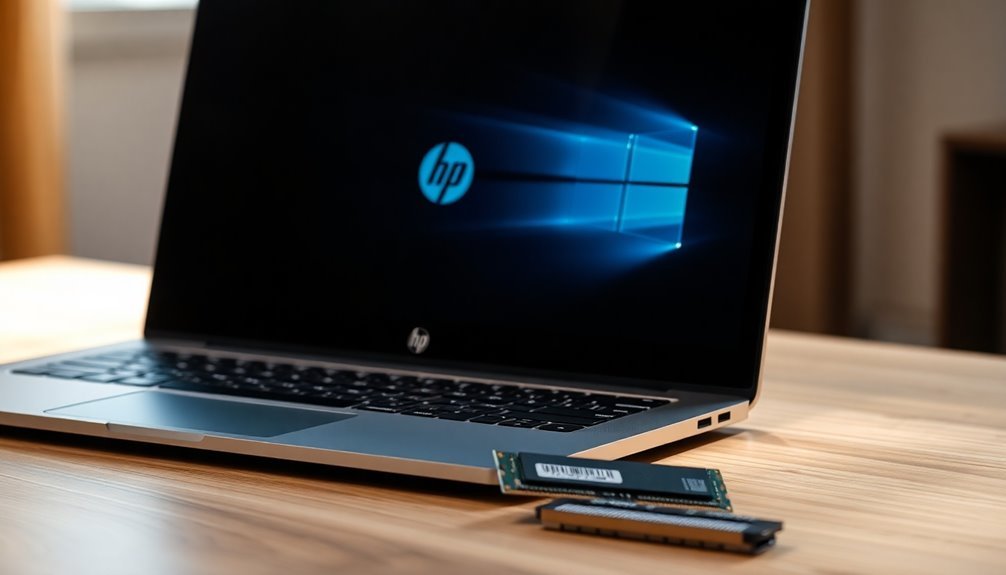
Boost Your HP Laptop Startup Speed by Increasing RAM for Windows 11
Windows 11 depends heavily on sufficient RAM to deliver fast startup and smooth performance. If your HP laptop is running with only 4GB of RAM, you may experience slow boot times and lag due to frequent data swapping between RAM and disk storage.
Upgrading your HP laptop’s RAM to at least 8GB—or higher if supported—can significantly improve Windows 11 startup speed and overall system responsiveness by reducing paging and allowing efficient caching of startup processes.
Before upgrading, check your HP laptop’s maximum RAM capacity, supported RAM types, and module speeds by consulting the user manual or BIOS settings. Choosing reliable RAM brands compatible with HP systems ensures optimal performance and stability.
Essential Tips for RAM Upgrade on HP Laptops:
- Verify your HP laptop’s supported RAM specifications and maximum memory capacity before purchasing.
- Always shut down your laptop completely and ground yourself to prevent static discharge during RAM installation.
- After upgrading, confirm the new RAM is correctly detected in Windows 11 System Settings to ensure enhanced startup speed and performance.
By increasing your HP laptop’s RAM, you can enjoy faster Windows 11 boot times and a smoother computing experience.
Upgrade today to optimize your device’s startup performance!
Keeping Windows 11 and Drivers Up to Date
How to Keep Your HP Laptop Fast on Windows 11: Update Windows and Drivers Regularly
Is your HP laptop running slow during startup on Windows 11? One common reason is outdated operating system files and hardware drivers. To boost your laptop’s boot speed and overall performance, it’s essential to keep Windows 11 and all device drivers up to date.
Here’s how to ensure your HP laptop stays updated:
1. Enable Automatic Windows Updates
Go to Settings > Windows Update and turn on automatic updates. Also, check the box for “Receive updates for other Microsoft products” to download the latest hardware drivers along with your OS updates.
2. Install Optional Driver Updates Manually
Sometimes, drivers appear under Optional updates. Visit Advanced options in Windows Update to manually install these critical driver updates. After installation, restart your laptop to apply changes.
3. Use Official Update Tools
Always update drivers using trusted sources like Windows Update or the HP Support Assistant. Avoid downloading drivers from unofficial websites to prevent instability or security risks.
4. Manage Driver Updates in Enterprise Settings
If you manage multiple HP devices, use Microsoft Intune for centralized driver update management. Set approval policies and phased deployments to keep updates stable and timely. Regularly review these policies to optimize performance.
5. Backup Drivers Before Updating
Before installing new drivers, back up your current ones. This allows easy rollback if you encounter issues after the update.
6. Focus on Key Drivers
Pay extra attention to updating drivers for graphics cards, network adapters, audio devices, and chipsets. Outdated drivers in these categories can cause slow startups and hardware malfunctions.
By keeping Windows 11 and all HP laptop drivers up to date, you’ll ensure faster boot times, enhanced stability, and improved hardware performance. Regular maintenance with official update tools is key to a smooth computing experience.
For more tips on optimizing your HP laptop’s performance, visit the official HP Support website.
Removing Malware and Unwanted Software
How to Remove Malware and Unwanted Software to Fix Slow Startup on Your HP Laptop
If your HP laptop is experiencing slow boot times, malware or unwanted software could be the culprit. These malicious programs often run hidden background processes that consume system resources and delay startup. Unwanted software, such as bloatware or browser toolbars, can also autostart with Windows 11, further impacting performance.
To fix slow startup issues, start by updating Windows 11 and all device drivers to ensure your system is running smoothly. Next, run a full system scan using Windows Security (Defender) to detect and remove malware threats. If Windows Security doesn’t fully resolve the problem, use trusted third-party antivirus tools like Malwarebytes for a deeper malware cleanup. Make sure your malware removal software is always up to date for the best protection.
Additionally, perform a clean boot to isolate and disable problematic startup programs that may be slowing your HP laptop. For severe infections, consider restoring your system from a backup or reinstalling Windows 11 to completely remove malware.
To prevent future malware infections and keep your HP laptop running fast:
- Schedule regular full system scans with the latest security tools.
- Avoid downloading software or files from untrusted sources.
- Regularly review and uninstall unnecessary programs and browser extensions.
Advanced Troubleshooting for Persistent Boot Issues
Advanced Troubleshooting for Persistent Boot Issues on HP Laptops Running Windows 11
If your HP laptop is experiencing slow startup or persistent boot issues, basic fixes may not be enough. To resolve these problems effectively, follow this advanced troubleshooting guide for Windows 11 boot errors.
Access Windows 11 Advanced Startup Options on HP Laptops
To begin advanced troubleshooting, access the Windows 11 Advanced Startup Options by holding the Shift key and selecting Restart from the Power menu. Then, choose Troubleshoot > Advanced options. Here, you’ll find essential repair tools such as System Restore, Startup Repair, and Command Prompt.
Use Startup Repair and Command Prompt for Boot Issues
Run Startup Repair to automatically detect and fix common boot problems on your HP laptop. If automatic repair doesn’t work, open Command Prompt to perform manual repairs. Key commands to try include:
- `bootrec /fixmbr` – Repairs the Master Boot Record
- `bootrec /fixboot` – Fixes the boot sector
- `chkdsk /f /r C:` – Checks and repairs disk errors on drive C
Create a Bootable Windows 11 USB for Recovery
If Windows 11 fails to start, create a bootable USB recovery drive using the Media Creation Tool from Microsoft. Boot your HP laptop from the USB by pressing ESC at startup and then F9 to select the boot device. Choose Repair your computer to access recovery options and perform further troubleshooting.
Boot into Safe Mode to Diagnose Driver or Software Conflicts
To isolate driver or software conflicts causing boot issues, force Windows 11 into recovery mode and boot into Safe Mode. This diagnostic mode loads only essential drivers and services, helping you identify problematic software.
Reset This PC to Reinstall Windows 11
If all else fails, use the Reset this PC feature in Windows 11. This option lets you reinstall Windows while keeping or removing your personal files, providing a fresh start to resolve persistent boot issues on your HP laptop.
Optimizing BIOS/UEFI and Power Settings
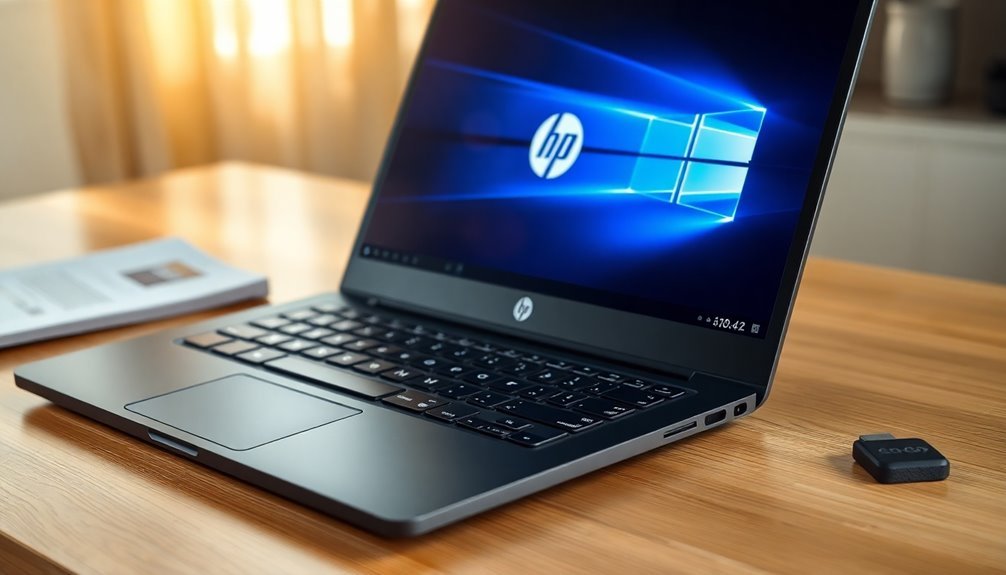
Optimize BIOS/UEFI and Power Settings to Speed Up Startup on Your HP Laptop with Windows 11
If your HP laptop running Windows 11 experiences slow startup times, optimizing BIOS/UEFI and power settings can significantly improve boot speed and system reliability. To get started, enter the BIOS/UEFI setup by pressing the F10 key during boot.
Ensure your boot mode is set to UEFI instead of Legacy for faster and more secure startup. Enable Secure Boot and verify that TPM 2.0 is active, as these are essential requirements for Windows 11 and help enhance security and performance.
Regularly update your BIOS/UEFI firmware using HP’s official update tools to maintain maximum compatibility and improve system stability. Set your internal SSD or HDD as the primary boot device, and disable unnecessary boot options such as network boot or USB devices to reduce boot delays.
In Windows 11, switch your power plan to “High Performance” to prevent processor throttling during startup, which can speed up boot times. Additionally, customize hybrid sleep and Fast Startup settings based on your laptop’s behavior to optimize power management and startup efficiency.
Key steps to improve HP laptop startup speed on Windows 11:
- Set boot mode to UEFI and enable Secure Boot in BIOS/UEFI
- Activate TPM 2.0 for Windows 11 compatibility and security
- Prioritize internal SSD or HDD as the first boot device
- Disable unused boot options like network or USB boot
- Update BIOS/UEFI firmware regularly with HP official tools
- Select “High Performance” power plan in Windows 11
- Adjust hybrid sleep and Fast Startup settings for optimal boot speed
Best Practices to Maintain Fast Boot Performance
How to Maintain Fast Boot Performance on Your HP Laptop with Windows 11
To keep your HP laptop running Windows 11 booting quickly, follow these proven best practices for fast boot performance.
Start by disabling unnecessary startup programs through Task Manager or Windows Settings > Apps > Startup. Prioritize removing heavy apps that slow down boot time and regularly review this list, as new software often adds itself automatically.
Next, uninstall unused applications and clean up system junk using Windows Disk Cleanup or trusted third-party tools to free up space. Ensure your system drive has at least 20% free disk space to prevent fragmentation and slow boot scans.
Enable Fast Startup in Windows power options to speed up boot times, but watch for hardware or driver conflicts, especially if you use dual boot with Linux. Adjust the hibernation file size (hiberfil.sys) to optimize storage and boot speed.
For best results, use an SSD instead of an HDD for your operating system drive and keep your SSD firmware updated. Regularly update Windows and all device drivers—particularly chipset and storage controllers—using HP’s official support tools to maintain optimal boot performance.
Implementing these tips will help you maintain consistently fast boot times on your HP laptop with Windows 11.
Frequently Asked Questions
Will a Factory Reset Erase All My Data and Files?
If you choose “Remove everything” during a factory reset, you’ll lose all your data and files. Selecting “Keep my files” keeps personal files but deletes apps and settings. Always back up important data before resetting.
Can External Devices Slow Down HP Laptop Startup?
Yes, external devices can slow down your laptop’s startup. Disconnect unnecessary USB drives, printers, or peripherals before booting. Update their drivers regularly. You’ll reduce hardware initialization time and avoid extra driver loading or resource conflicts during startup.
How Does Bitlocker Encryption Affect Boot Time?
Picture BitLocker decrypting your drive every boot—this extra security step introduces a small delay, especially on older hardware or HDDs. To minimize slowdowns, use SSDs and guarantee your device supports hardware-based encryption acceleration.
Are There Hp-Specific Tools for Diagnosing Slow Startup?
Yes, you can use HP Support Assistant for automated diagnostics and driver updates, HP PC Hardware Diagnostics to check hardware health, and update your BIOS via Support Assistant. Access these tools through Windows or boot menu shortcuts for troubleshooting.
Does Dual-Booting Windows 11 With Another OS Impact Startup Speed?
Think of Odysseus maneuvering tricky waters—dual-booting itself doesn’t slow Windows 11 startup, but low disk space, fragmented drives, or bootloader conflicts can. You should keep sufficient free space and check bootloader integrity to avoid delays.
Conclusion
Don’t assume your HP laptop’s slow startup is just “normal” for Windows 11—there are clear fixes you can apply right now. By disabling Fast Startup, trimming startup programs, upgrading to an SSD, or checking for malware, you’ll see real results. Even if you think your system’s too old or complicated, these steps work on any HP model. Stay proactive with maintenance, and you’ll keep your laptop booting quickly and efficiently every time.
